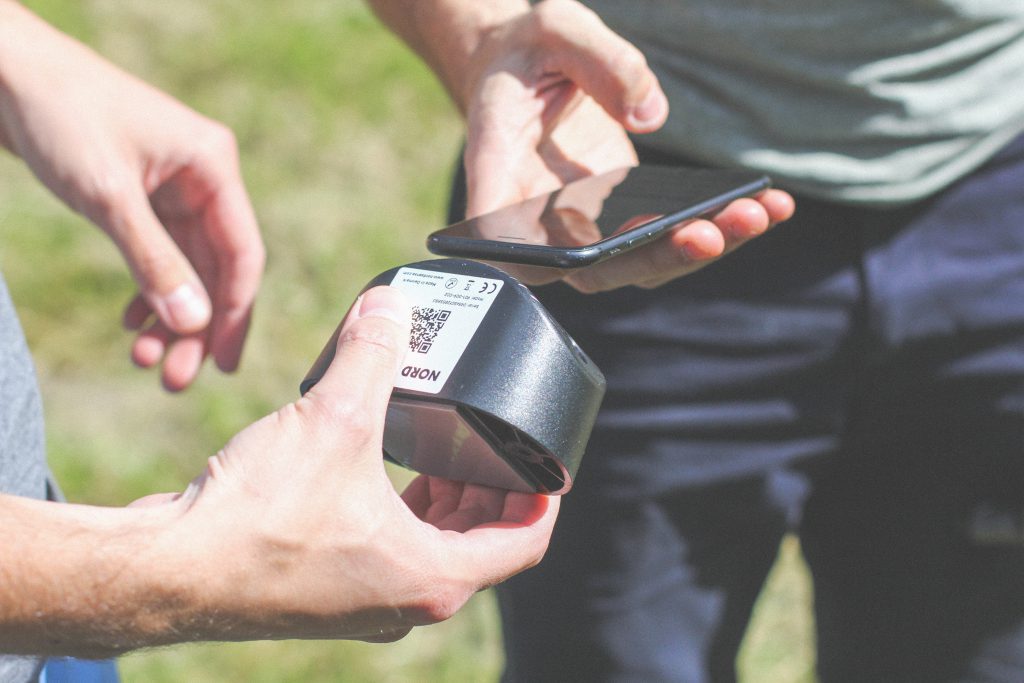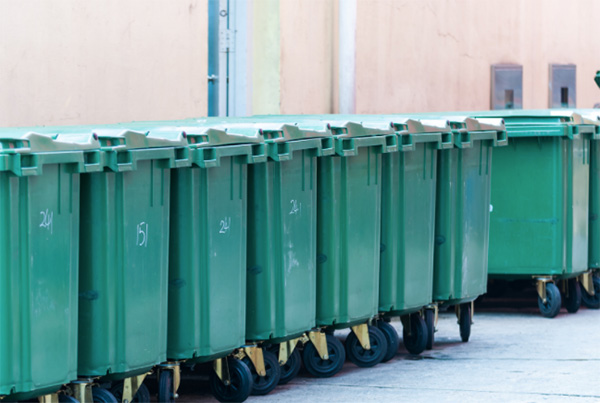Smart waste bins are really taking off among municipalities and waste authorities. And it’s easy to see why. Waste bin sensors act as digitalization and transparency tools, helping you focus your waste operations on improving sustainability efforts, cutting down on costs, optimizing processes, and providing sanitation workers with a better work environment.
But getting started with smart waste management can feel like a complex process. And with so many smart sensors on the market, it can be difficult to know which solution will work best with your needs or how to get your waste project off the ground. That’s why we’ve tried to simplify the process with 5 success criteria for getting started with waste sensors and running a successful waste project.
1. Set Your Baseline
Start your waste project with a solid foundation and framework. Set clear goals by asking yourself what success will look like with this technology. Is it primarily about cost-savings, cleaning up the city, or becoming more sustainable? Clear and aligned goals will enable you to use specific metrics to measure and track your progress.
Testing your project and business case requires a lot of data. So, make sure that you set a realistic timeframe for your waste project. It’s unlikely that you will be able to track progress and see results if your project only lasts for a few weeks. Committing to an evaluation period of (e.g., three months to one year) will enable you to monitor the impact of smart bin sensors on container fill levels and empower you to fully test your business case. This will also give you adequate time to act on data insights and make changes to your ways of working.
New and old data are key to a successful waste project. And we often have very specific targets with a waste project that will require more data than what a bin sensor can provide. So, start by considering your available data sources. What do you already have that can help you measure the success of your sensors? And which data sources do you want to draw on, in addition to your sensor technology? This could be the number of complaints from citizens, employee satisfaction surveys, fuel consumption, waste weight data, etc. Different layers of data will help you build a strong business case for your smart sensor project.
2. Assess Your Container Types
Smart sensors will work in the majority of waste containers. But there are some container types which may be unsuited to the technology, meaning there is no guarantee of accurate data.
Prior to any sensor installation, your sensor provider should conduct a thorough pre-assessment to ensure that your containers are a good match for the sensors. This assessment is crucial to the successful startup of your waste project.
Many waste containers are a perfect fit for smart sensors, including front-end loaders, city trash cans, public street bins and four-wheel toters. However, some containers are not, for example, waste containers that use plastic bags that inflate can cause inaccurate data. Plastic bags are not always a no-go, but certain usages need to be carefully considered in relation to sensors. Open top containers can also be problematic due to sensor placement, since the sensor may only have a small view of the container, leading to insufficient data.
Learn more about smart bin sensors and data insights.
3. Consider Your Connectivity
Connectivity is complex and unpredictable. And there is no one-size-fits-all when it comes to smart sensor solutions. Simply put, some locations are less suited to smart sensors than others due to connectivity. With some cellular networks sunsetting, it’s important that you check that your smart sensors are compatible with your cellular network, whether that be 2G, 3G, 4G, or 5G.
Remote locations can also be problematic for sensor technology and may require some extra investigation. Your smart sensor provider should provide in-depth field testing to mitigate connectivity issues as much as possible and advise you on optimal container placement and location.
But remember, connectivity is generally an iterative process – especially if your sensors are being placed outside of an urban hotspot. It may require some trial and error, but your sensor provider should be on hand to ensure as smooth a set up as possible.

4. Plan Your Capacity
As with any new technology or project, the key to success is allocating adequate resources internally to implement the changes and keep things running smoothly. A solid onboarding process with clear demonstrations of your online platform will help your project team feel comfortable using the new technology.
Many waste projects can have a tendency to struggle at the final hurdle: translating data insights into action. Assigning someone in-house to understand the data from sensors and turn them into improvement points is absolutely crucial, if you want to benefit from the technology.
Although smart sensor solutions often include frequent reports and data science support to help you make sense of your data, it’s important that your project team is empowered to act on the information you receive, so you can take steps to achieving your waste goals. Afterall, the sensor is just a tool – you and your team need to be willing to make the changes.
5. Ensure Stakeholder Buy-In
This is a success criterion that can be applied to any and all projects, no matter what industry you work in. Getting your stakeholders on board with your project and what you hope to achieve is essential. Without their crucial support, launching and running your project will feel like an uphill battle.
Start by identifying your stakeholders and their needs. That means all of the people, groups, sponsors, partners, and resources that will be impacted by your waste project. Getting drivers and sanitation workers involved is particularly important, as their daily work will be affected the most by the smart sensors. They will need to get to grips with new garbage truck routes, a new garbage route planner, and new ways of working. Keeping them in the loop is key to your project’s success.
Take The Mystery Out Of Waste Management
Smart waste bins are the way forward in the waste sector and will help us make more data-driven decisions. Once we can start predicting waste patterns, we can start changing things and make an impact on our wallets and the environment. Getting set up with new technology and new ways of working can seem overwhelming at first, so keep our 5 success criteria in mind when selecting smart sensors to get your waste project off to the best start.
Find Out Which Sensor Solution Is Right For You
VP of Customer Success Dina Widd is on hand to help you find the right smart sensor solution and achieve your waste goals.

